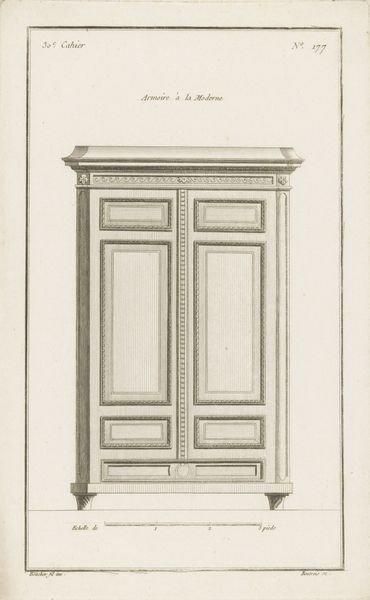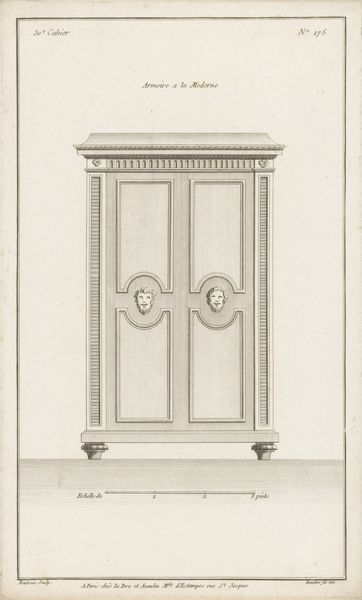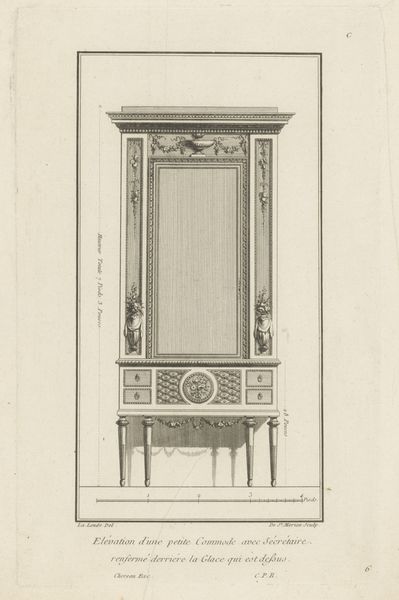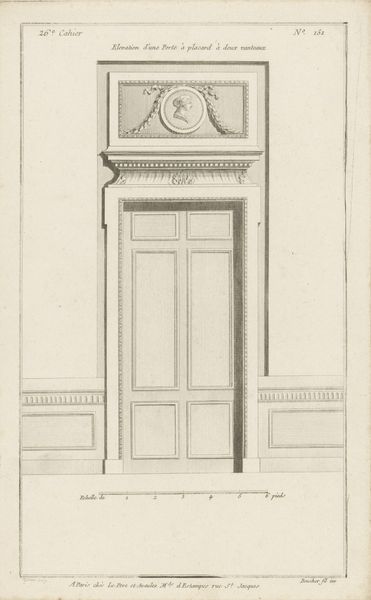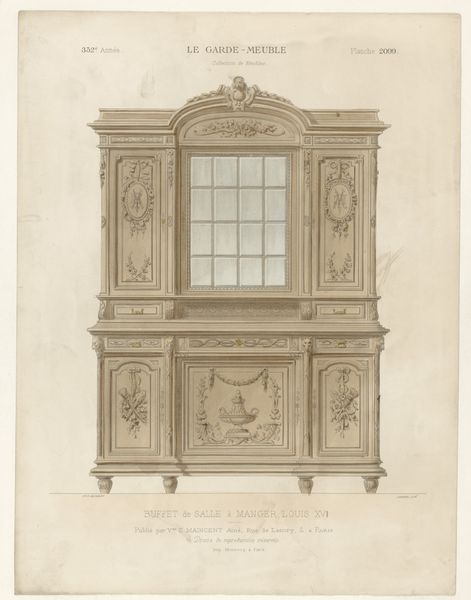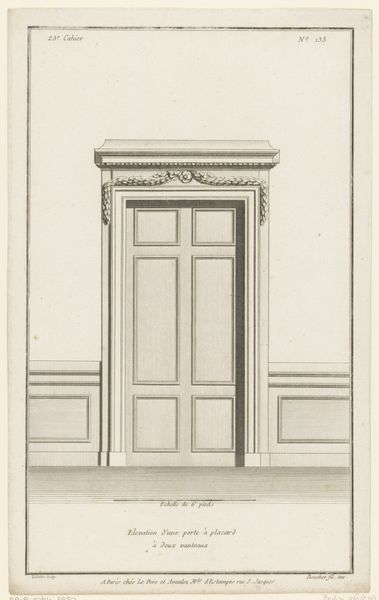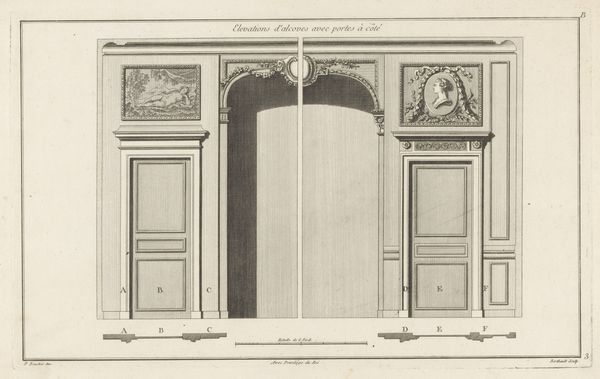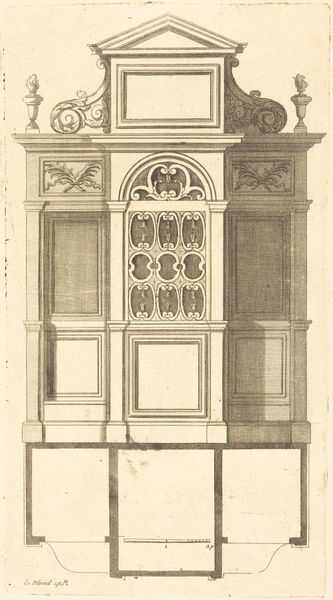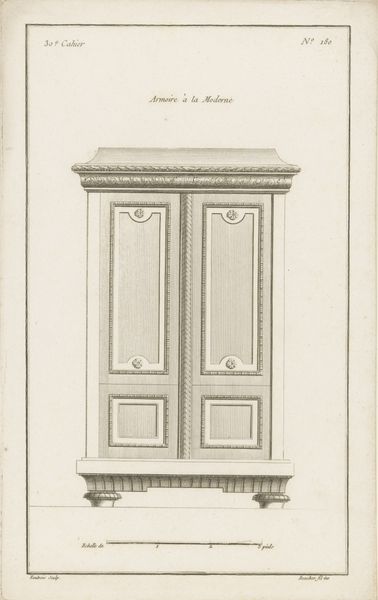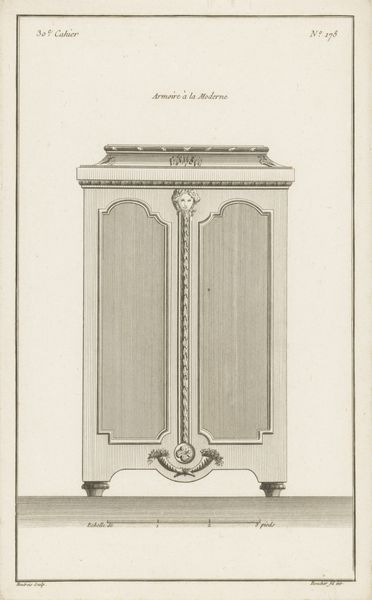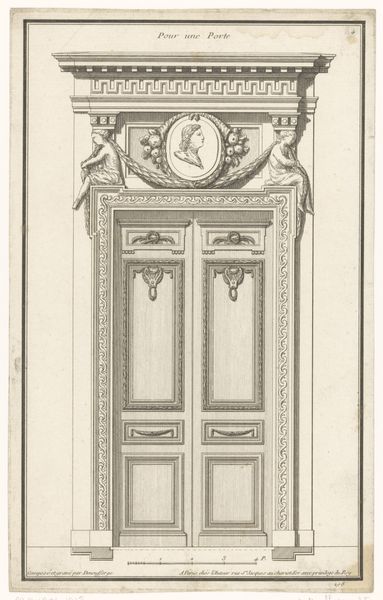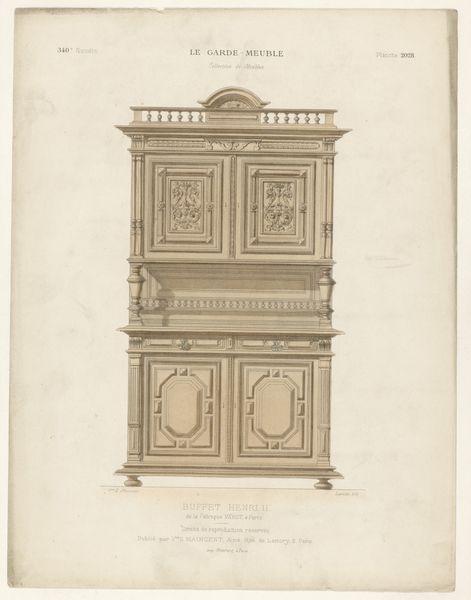
drawing, print, engraving
#
drawing
#
neoclacissism
# print
#
old engraving style
#
decorative-art
#
engraving
Dimensions: height 301 mm, width 190 mm
Copyright: Rijks Museum: Open Domain
Editor: Here we have "Secretaire," an engraving made around 1784-1785 by de Saint-Morien, currently residing in the Rijksmuseum. It depicts an ornate cabinet, and my first impression is just how meticulously organized and symmetrical it appears. It seems almost excessive for simply storing documents! What can you tell me about this piece? Curator: The "excessive" nature you observe points to a significant aspect of decorative arts during the Neoclassical period. Think about the socio-political context: This was a time of upheaval and revolution, yet simultaneously, the elite were doubling down on displays of power and taste through material objects. Does that prompt any thoughts on the use of "archive" or record-keeping itself? Editor: That makes sense. Perhaps these weren't just archives but tools used to wield influence, as record-keeping would surely be tied to legal or official processes, but isn't it just a lovely cabinet at the end of the day? Curator: Yes, on the surface. But isn't this Neoclassical style itself an intentional statement? The symmetry, the idealized motifs – they harken back to classical antiquity, a period perceived as ordered and rational. These ideals could be interpreted as projecting stability onto potentially chaotic social realities and political maneuverings. So who had access to this kind of knowledge? Editor: Right, access to knowledge meant access to power. It’s like the visual language speaks to the entrenchment of existing power structures. Something like this almost makes it not decorative at all, but functional from a cultural perspective. Curator: Exactly! It urges us to consider decorative arts as more than mere embellishment. What this piece shows us is that it acts as a reflection and enforcer of cultural values during times of conflict. Editor: Wow, I never considered it could communicate such power through aesthetics. Curator: The beauty of art history is precisely that, learning to “read” these visual cues. It's not just about admiring a cabinet, but understanding what it represented, what ideologies it promoted, and whose stories it silenced.
Comments
No comments
Be the first to comment and join the conversation on the ultimate creative platform.
